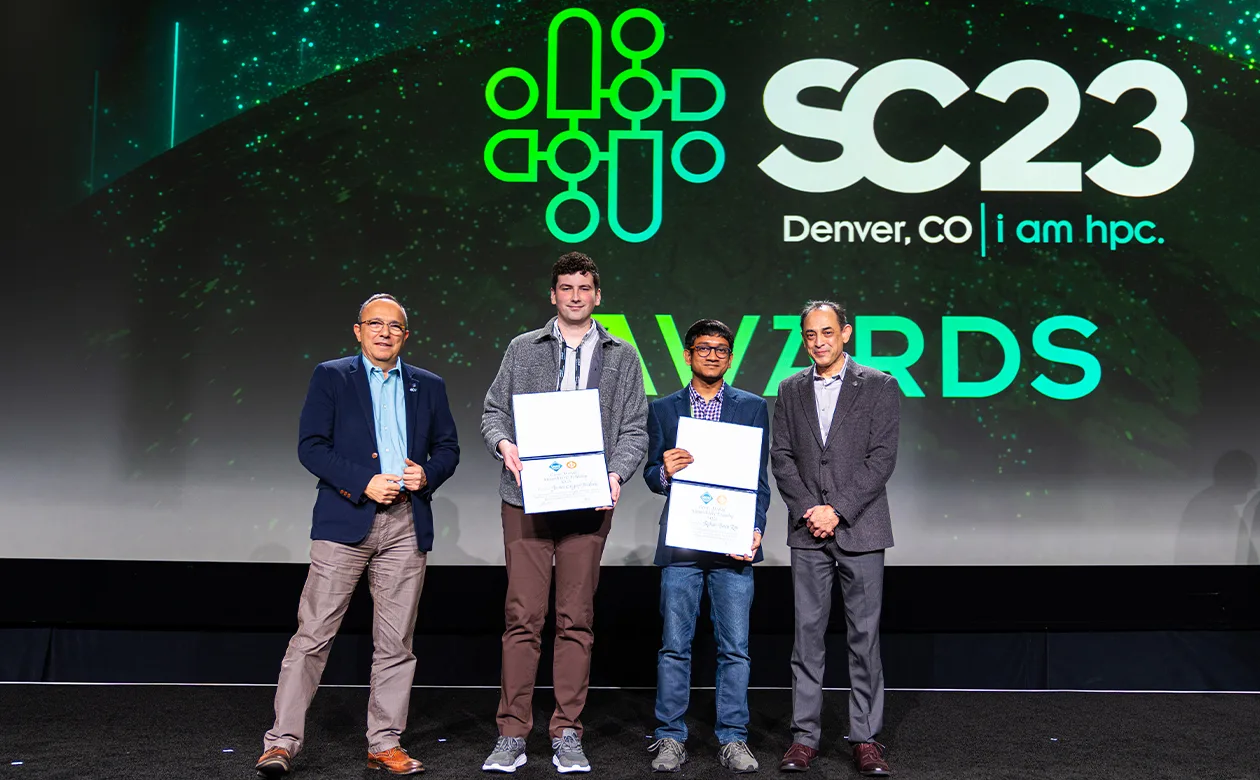
Rohan Basu Roy is on a mission to make high performance computing (HPC)—core to AI-powered scientific discovery—faster and more sustainable. He joined the Scientific Computing and Imaging (SCI) Institute and the Kahlert School of Computing in July 2025, fresh off completing his Ph.D. in computer engineering at Northeastern University. Roy thrives under pressure, draws inspiration from heavy metal music, and brings a bold philosophy to his work: computing at scale must evolve to meet environmental challenges. In this Q&A, Roy shares his research goals, what excites him about HPC, and why he’s thrilled to be part of the University of Utah’s collaborative research community.
What’s your primary research area?
I work in HPC and cloud systems, focusing on improving their efficiency, cost-effectiveness, and sustainability. My research also explores emerging computing paradigms such as serverless and quantum computing.
Why is your research important?
A large share of today’s scientific workloads run on high performance computing systems, and my research focuses on scheduling and resource management of these systems that helps these simulations and experiments run faster and more smoothly. At the same time, these large-scale computing systems pose growing environmental risks, especially in the era of AI, so I work on improving their energy efficiency and sustainability. Looking ahead, I also explore how novel paradigms like accelerators and quantum computing can be integrated with classical systems to make future computing both more powerful and more responsible.
What makes you most excited about the work you’re doing?
What excites me most is operating at massive scale—both in the computing systems I work on and in the problems they enable us to solve. HPC and cloud platforms run some of humanity’s most ambitious workloads, from simulating the climate to advancing AI, and even small improvements in scheduling or efficiency can create outsized scientific and environmental impact. For me, the real thrill is shaping how these vast systems push the boundaries of discovery while becoming more sustainable and future-ready. I also find it exciting to work on multiple different-yet-related areas at the same time and draw connections that lead to new insights.
What does being a part of SCI mean to you?
Being part of SCI means joining a community built around interdisciplinary collaboration. For me, it is exciting to connect my work in HPC, cloud computing, and sustainability with colleagues advancing fields like imaging, medicine, and biology, and others. I see SCI as a place where diverse expertise comes together to create impact that no single discipline could achieve on its own.
Why did you become a professor and researcher?
I grew up surrounded by multiple faculty members in my immediate family, so academia felt like a natural path. Along the way, I was fortunate to have several key mentors, all professors, who instilled in me the thrill of pushing scientific boundaries and the joy of discovery. Their influence inspired me to become a professor myself, where I can mentor students and build new ideas together.
I am also a strong believer in open science and make a consistent effort to release the software artifacts and research outputs from my group as open-source materials. I place emphasis on improving and documenting these tools, so they are easy for others to understand, adopt, and build upon. I view impact as creating resources that the broader community can readily use.
What inspires you in your work?
Paper and other submission deadlines give me some of my strongest motivation. I am also inspired by the process of brainstorming new ideas and working through challenging problems. I draw energy from brilliant students, supportive mentors, and collaborative colleagues who continually push my thinking forward. And I will admit—aiming for top publication venues where acceptance is notoriously difficult brings its own kind of motivation and thrill.
What do you like to do in your free time?
In my free time, I enjoy going to concerts and playing heavy metal music—Black Sabbath and Ozzy Osbourne are longtime favorites. I also like spending time in the kitchen, experimenting with cooking when I get the chance.
Image: Rohan Basu Roy (second from right) receives a George Michael Memorial HPC Fellowship on stage at the 2023 SC, the International Conference for High Performance Computing, sponsored by ACM and IEEE CS. The award honors exceptional Ph.D. students throughout the world whose research focus areas are in high performance computing, networking, storage, and large-scale data analysis. SCI Director Manish Parashar (far right) helped to present the award. Also pictured, from left: Yannis Ioannidis (ACM president) and fellowship winner J. Gregory Pauloski (University of Chicago).
